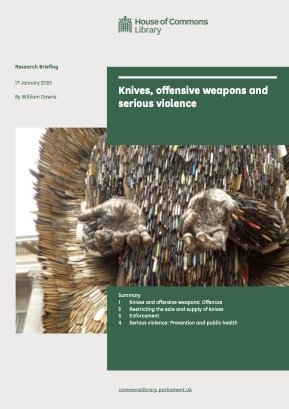By Susie Hulley and Tara Young
OWHRs were introduced under the Police, Crime, Sentencing and Courts Act 2022 to address concerns that existing statutory homicide reviews were not formally capturing information about the ‘growing proportion’ of homicides involving offensive weapons. Like other homicide reviews, the purpose of OWHRs is to help national and local agencies understand the causes of serious violence, to better prevent homicides involving offensive weapons and ‘save lives’.
Authors Dr Susie Hulley and Dr Tara Young examine the potential benefits and risks of OWHRs, particularly in regards to young adult safety. Young adults (18- to 25-year-olds) were identified as overlooked by existing homicide reviews, and as such were considered a priority for OWHRs.
They identify the potential benefits as:
Serving a symbolic function to victims’ families and the wider community of the Government’s commitment to taking offensive weapon-related homicides seriously.
Providing a victim’s family and friends with additional information about a homicide.
Offering valuable local and national data about offensive weapon homicides involving young adults that is not currently available.
Having the potential to help local and national agencies develop policies and practices to address weapon-related homicide among young adults.
However, there are also some potential risks:
OWHRs may not be effective, as evidence suggests that existing homicide reviews have not reduced homicide rates.
Local and national agencies may not engage with or act on the findings from OWHRs, particularly given the lack of a statutory duty.
'Hindsight bias’ may be applied by OWHR panels.
'Selection bias' may generate misinformation about offensive weapon homicides and potentially reinforce existing racialised stereotypes.
While the report does urge the government to instead consider well-evidenced interventions, it also provides five recommendations that could mitigate some of the risks, if OWHRs are to be rolled out.
London: Centre for Crime and Justice Studies, 2025. 27p.



